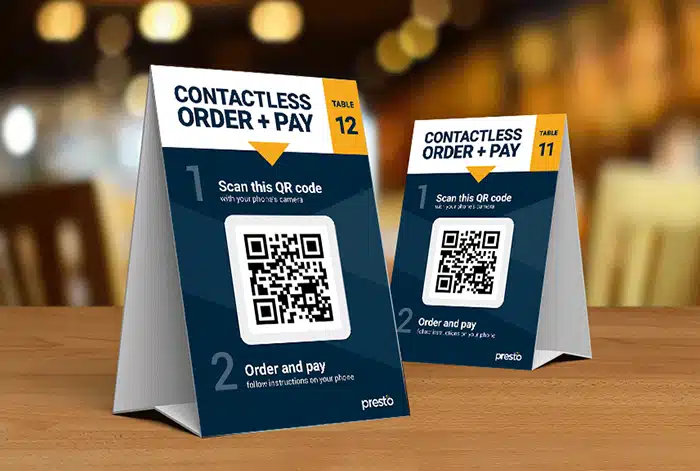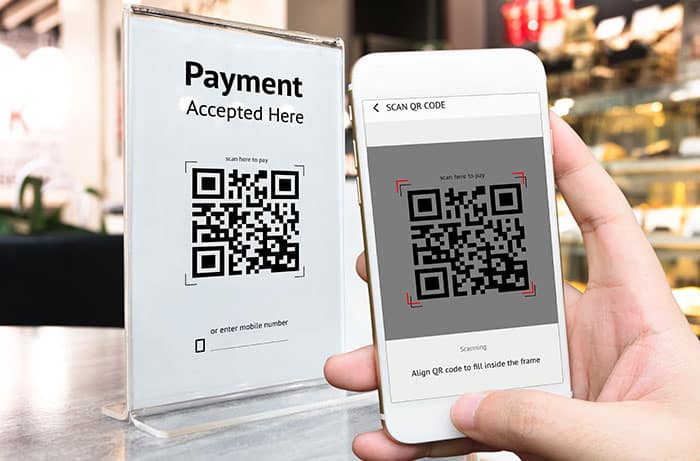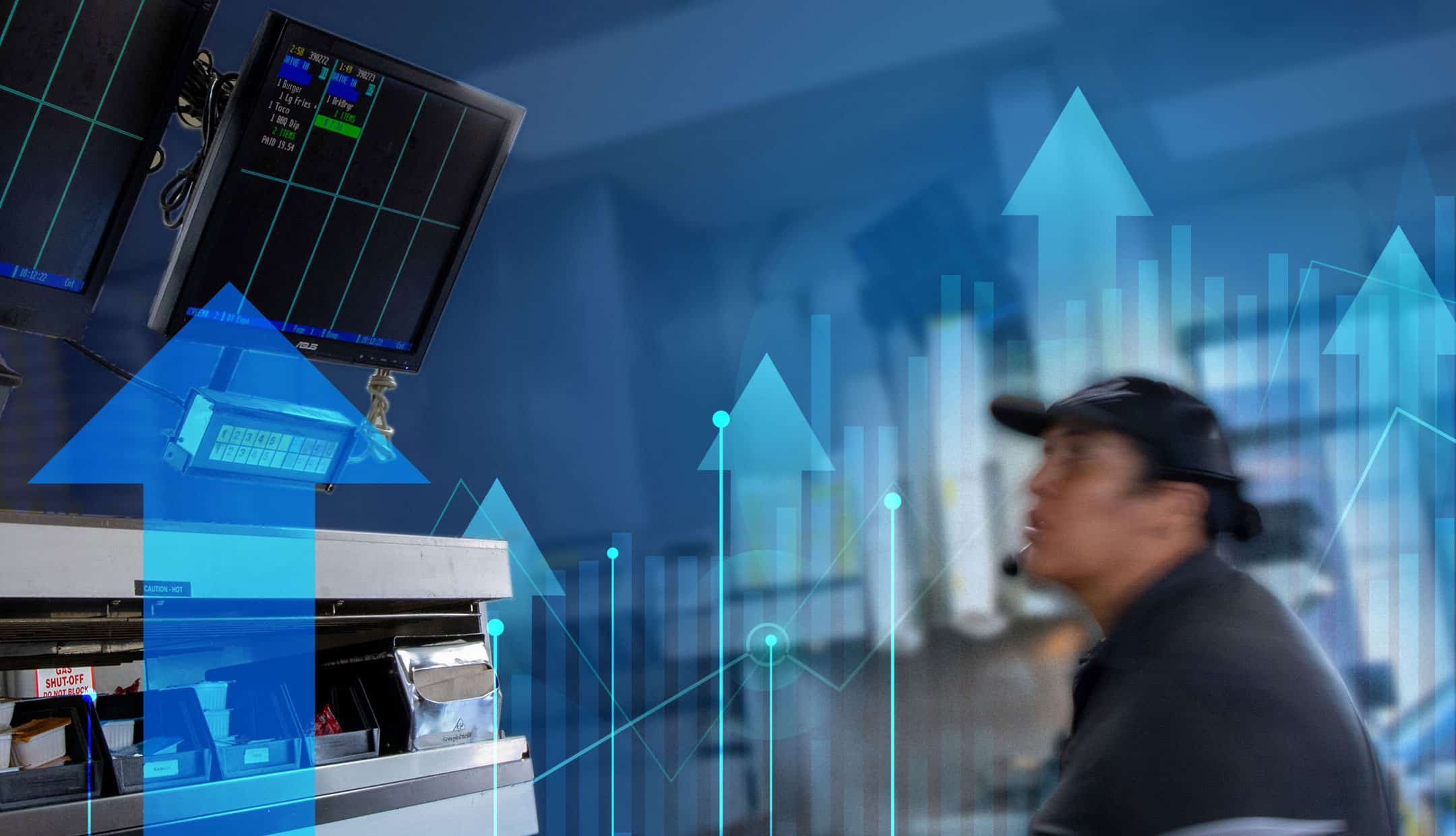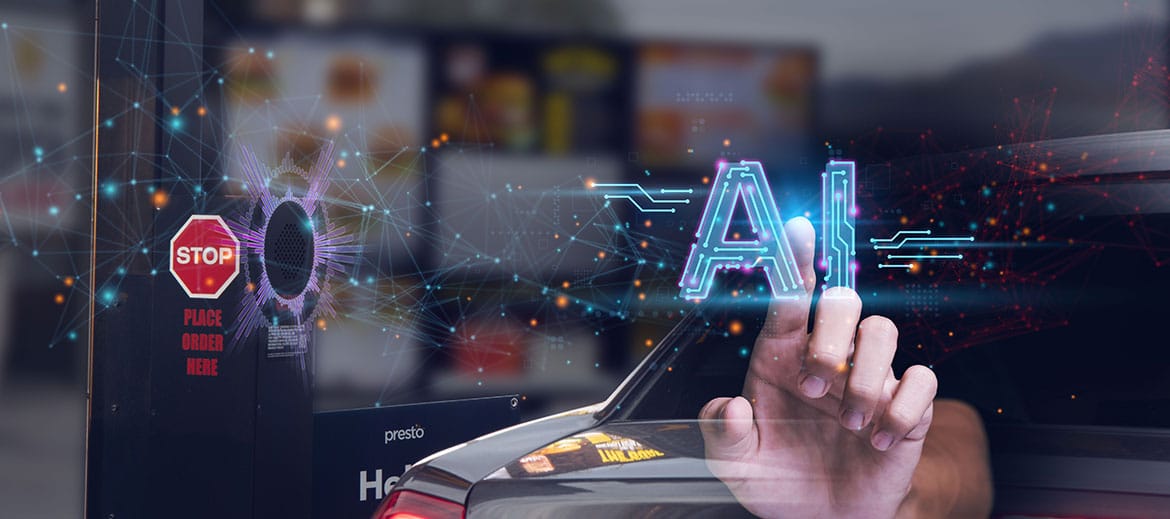Quick Response (QR) codes became popular in the US in the past few years in consumer advertising. They work like barcodes you see in stores, but they can store more data and can be scanned from a range of flat surfaces. Consumers can quickly scan a QR code with their phone’s camera to visit a website, which is faster than manually entering a URL. As a result, QR codes have grown popular as a convenient method of quickly accessing information.
Almost all consumers have a personal smartphone nowadays, making QR codes extremely accessible. QR code payments eliminate the need for consumers and vendors to exchange cash or credit cards, making this method safer during COVID-19. Learn how offering QR code payments in your restaurant can help you reopen for dine-in safely during the coronavirus pandemic.
How Do QR Code Payments Work?
To sum up what a QR code payment transaction might look like, a guest scans the payment recipient’s QR code with their phone camera. They tap the link that shows up on their screen, which takes them to the restaurant’s checkout page where they can enter their payment information.
Alternatively, guests can use an app instead to scan QR codes and send payments, as is commonplace in restaurants in China. Since Chinese technology company Tencent introduced a QR code payment system on its messaging app Wechat (used by more than 1 billion people) in 2014, QR code payments have rapidly replaced the use of cash and physical credit cards. Users first link their bank account to the WeChat app. Each restaurant displays their unique QR code on placards or stickers on tables. The guest simply scans the QR code with the app and payment is deducted from their balance. QR code payments are available at grocery stores, department stores, fine dining restaurants, and even hole-in-the-wall restaurants.
What Are the Benefits of Taking Payments via QR Code?
- Promote Social Distancing: Even as shelter-in-place orders are eased and dining rooms reopen, a majority of guests still want to continue to perform social distancing while dining out. 86% of consumers surveyed by Datassential in April want to maintain distance from other diners, suggesting that they would prefer to minimize interactions with servers.QR codes allow guests to self-checkout from the table, so it is a completely contactless payment process. They can pay for their check from their phone without handing their credit card to the server, promoting social distancing. The process is both safer and faster for guests and staff members. Contactless payments are also highly encouraged in various public health and state reopening guidelines.
- Meet Changing Guest Demands: There has been a significant increase in demand for contactless payments in restaurants. According to Datassential’s April survey, 87% of restaurant guests like the idea of contactless payments and 44% require it. Restaurants that pioneer self-payments at the table via QR code will meet new guest needs and win more trust for their COVID-19 response.
- Increase Table Turns: Think about the traditional payment process for a dine-in guest. A guest asks the server for the check. The server delivers the check, but the guest must usually wait for the server to come by again to take the credit card. The server brings the credit card to the POS terminal and waits for their turn to process the payment. Finally, the server returns the credit card to the guest and they are free to leave the restaurant.Not only does this process impede social distancing efforts. It is also inefficient, since the server had to make 3 separate trips to the guest’s table to get the payment processed. By enabling a guest to self-checkout via a QR code, you can free up your staff to focus on providing a hospitable dining experience, rather than walking back and forth between tables to process payments.
- QR Codes Allow for Contactless Ordering: QR codes displayed at the table can also give guests access to ordering on their phones. Guests placing their own orders “tend to engage with the menu longer and spend 15% to 25% more,” according to restaurant analyst Peter Saleh. Additionally, nearly ⅔ of guests would accept no physical menus as a new rule in restaurants. Staff members would no longer need to painstakingly disinfect traditional print-out menus. Digital menus are more easily maintained and edited by restaurant managers. They can be searchable based on a guest’s preferences and allergies.

How to Get Started on QR Code Payments
- Place QR Codes On Restaurant Tables: Display the QR codes that are linked to your online checkout system in your restaurant. You can place numbered QR code stickers or tent cards on tables. Payments will show up on your POS system based on the numbers, enabling your staff members to match payments to tables. The Presto Contactless Dining Kit includes QR code stickers and display placards to help you get started in minutes.
- Reopen Your Restaurant Safely: Let your community know that you are reopening with a brand new contactless payment system to encourage visits. Show off your contactless payment system on your social media, or send an email to your mailing list that outlines your new safety measures. Your restaurant will be ahead of the game in offering a contactless dining experience and impress your guests.
Looking to set up a contactless payment solution for your restaurant within days? The Presto Contactless Dining Kit enables your restaurant to provide an end-to-end contactless dining experience to your guests beyond just payments. Guests can view the complete menu, place orders, and pay at the table—without the need for any human contact. Learn more at presto.com/contactless.



